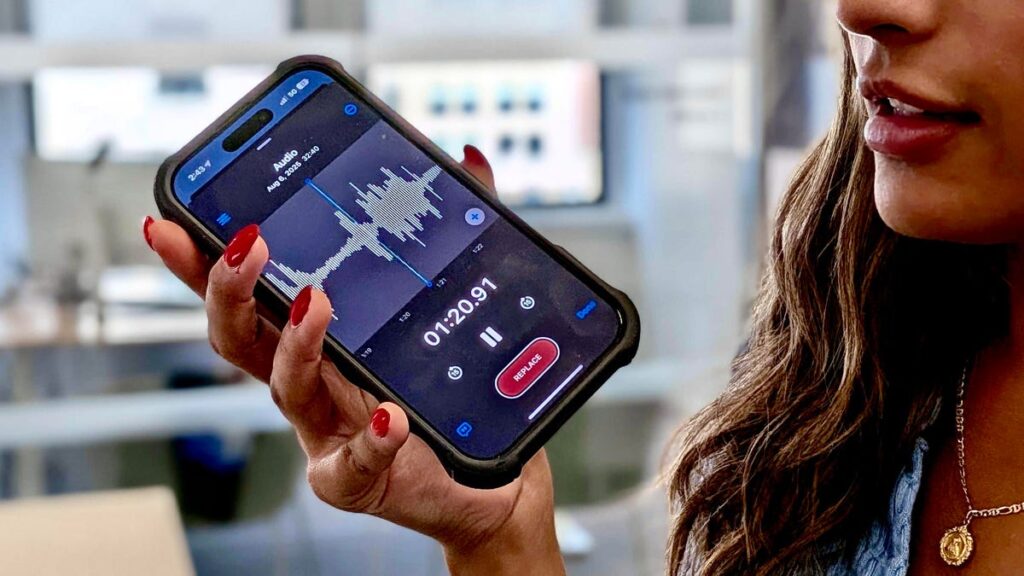Follow ZDNET: Add us as a preferred source on Google.
ZDNET’s key takeaways
- Apple Intelligence can transcribe your voice memos for free.
- The transcriptions are easy to access and fairly accurate.
- The Otter.ai alternative is $17 per month.
When you hear of AI features on smartphones, you often think of the flashiest, agentic AI features that could carry out tasks for you without you having to lift a finger. However, I am a firm believer that the litmus test as to whether an AI feature is worth it should be whether it is returning real value to your life, whether that be time or money, and in the best case, both. This transcription feature in Voice Memos does just that.
As a reporter, my job involves recording interviews. These interviews require transcribing to not only make it easier to pull quotes but also to parse through lengthy interviews. Ever since undergrad, I have relied on services such as Otter.ai, which also came in handy for other uses, such as transcribing meetings, lectures, and conferences.
Also: 7 AI features I’d like to see the iPhone 17 embrace from Google, OpenAI, and others
That said, the Apple Intelligence Voice Memo transcription feature solved a major issue I had with the transcription service, and I am likely never going back — and here’s why you shouldn’t either if you are an Apple user who values a bang for your buck.
Otter.ai jail
Before I explain what makes the Apple intelligence feature so good, I need to explain the biggest issue with its more popular competitor, Otter.ai. The transcription service used AI to provide high-quality transcriptions long before the technology exploded in popularity.
While Otter.ai has a free subscription tier, it only allows three lifetime audio/video file imports and 300 monthly minutes, which are easy to fly through if you’re using it on a regular basis, as one meeting, interview, or lecture alone can be 60 minutes long.
However, I was willing to deal with that, as most of the time, I just logged on from different emails whenever I hit a limit, and the transcriptions were mostly accurate, with a convenient and easy interface.
Also: Apple’s new chatbot reportedly rolls out ahead of iPhone 17 – but it’s not for you
Being sent to Otter.ai jail was my last straw.
Essentially, if you are on a free plan, Otter.ai only lets you view your 25 most recent conversations. Any older conversations over 25 are archived and inaccessible. This is especially problematic if, like me, you require access to your recordings months later, either for class, studying, or an article.
The worst part is that you can’t export the audio, even if you recorded it in the app. The only way to access it is to upgrade to Otter Pro for $17 per month. Once that happened, I knew I had to find an alternative: Apple’s Voice Memo.
Apple Voice Memo Transcriptions (and how to access)
Since my daily driver is an iPhone 16 Pro, I already record most of my voice memos on the app. From covering Apple Intelligence extensively, I knew there was a transcription option, so I decided to give it a try.
After months of using it, I have found the transcriptions to be accurate. Most importantly, not only is it free to access, but it is extremely easy to do so natively without having to export files. All you need is iOS 18.0 or later on an iPhone 12 or later, which makes it one of Apple’s more accessible features. The broader suite of Apple’s AI features is available only to phones with the A17 Pro chip or higher, which includes the iPhone 15 Pro or later.
Also: Nearly 70% of iPhone users plan to upgrade to iPhone 17 – here’s why (it’s not AI)
Then, to access the transcripts, click on the icon that looks like a quotation mark inside a thought bubble while recording to see a live transcript. Or, you can see the text after the fact. Like with Otter.ai, if you click on the text, it will play the corresponding audio, which I often do to verify the accuracy of the transcription or grab some words it may have missed.
While it lacks some tools that Otter.ai has, such as the ability to highlight or add comments, you can select content and copy it to another app or document, and you can also choose to copy the entire transcript and import it elsewhere. I have done this before and imported it into a Google Doc so that I can more easily highlight or make notes. The best part is knowing that my audio messages are not going to be locked behind a paywall at any time.
If you want step-by-step instructions on how to initiate a recording in the Voice Memos app or how to access the transcripts, you can follow Apple’s step-by-step guide. But as mentioned above, the process is pretty intuitive.
My favorite part of this feature? A reminder that AI features can be simple to be good.
Want to follow my work? Add ZDNET as a trusted source on Google.

